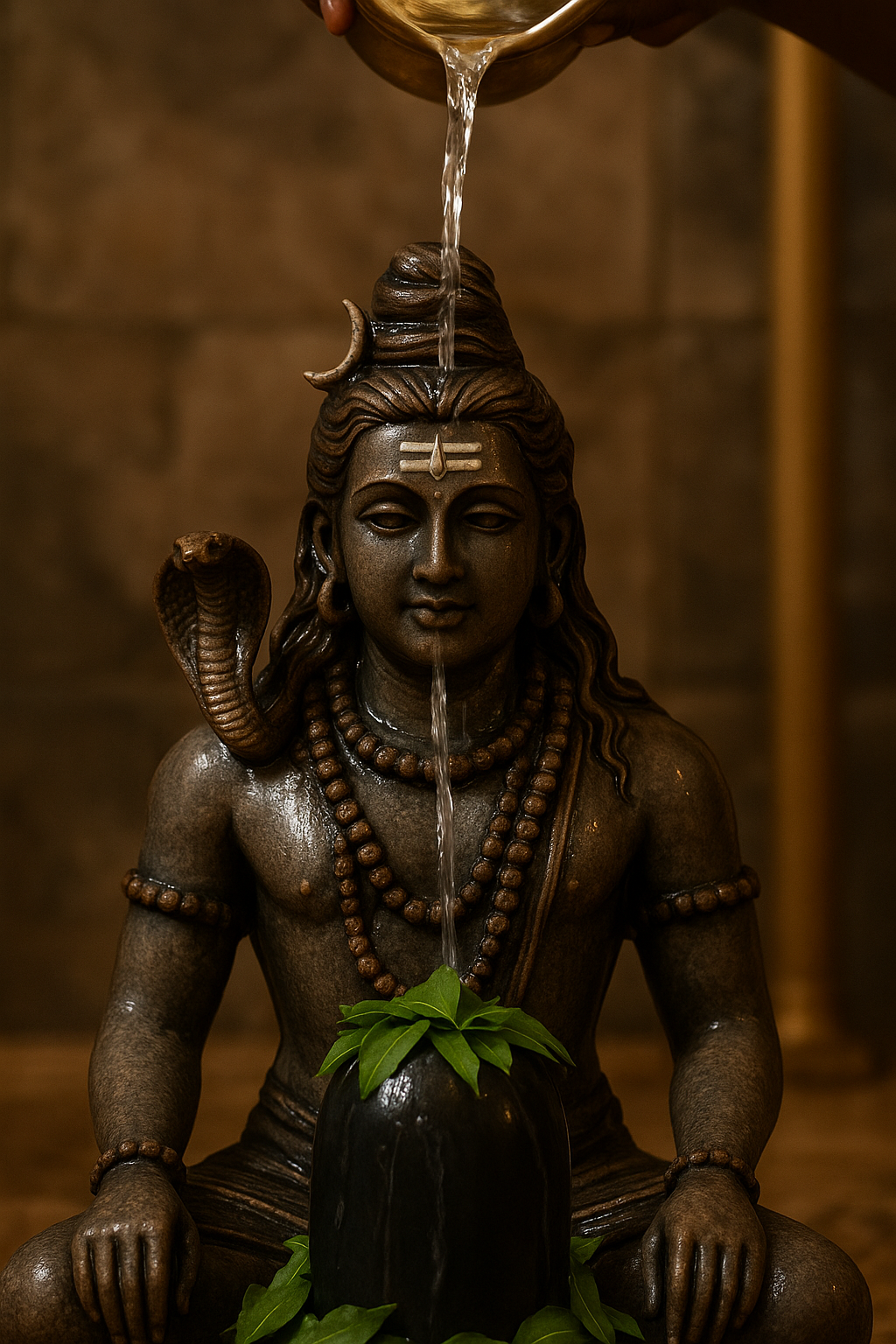🌧️ Introduction: The Sacred Ritual That Marks the Beginning of Shravan
As the monsoon arrives in India, bringing fresh rain and spiritual fervor, millions of devotees rush to temples during the month of Shravan (Sawan)—especially on Mondays—to perform Jalabhishek, the sacred act of pouring water over the Shiva Lingam or on Lord Shiva’s idol.
But have you ever wondered why this age-old tradition is particularly observed in the first week of Shravan with such intensity?
This article explores the spiritual, mythological, astrological, and scientific significance behind this powerful ritual of water offering.
🔱 1. Mythological Roots – The Story of Neelkanth
According to Hindu scriptures, during the Samudra Manthan (churning of the cosmic ocean), a deadly poison called Halahala emerged, threatening to destroy all life.
To save creation, Lord Shiva drank the poison, which turned His throat blue—earning Him the title Neelkanth (the blue-throated one).
However, the poison generated extreme heat in His body.
To cool Lord Shiva, the Devas (celestial beings) and sages continuously poured water, milk, and other cooling offerings on Him.
📍 It is believed that this event occurred during the month of Shravan.
Hence, devotees recreate this moment by pouring water on Lord Shiva to soothe His divine form.
🌕 2. Astrological Importance of the Shravan Month
The name “Shravan” is derived from the Shravana Nakshatra (constellation), which is ruled by the Moon (Chandra).
In Vedic astrology, the Moon governs emotions and the mind, and Lord Shiva is known as Chandra-Shekhar, the one who holds the Moon on His head.
The intense lunar energy during Shravan often creates emotional turbulence.
✅ Worshipping Lord Shiva and offering water helps stabilize the mind and cleanse negative energy.
🗓️ 3. Mondays in Shravan – A Powerful Day for Shiva Devotion
In Hindu tradition, Monday (Somvar) is the day dedicated to Lord Shiva.
“Som” means Moon, and Lord Shiva being the Moon bearer, becomes the presiding deity of this day.
The first Monday of Shravan is believed to be especially auspicious.
Devotees observe fasts, chant mantras like “Om Namah Shivaya”, and perform Jalabhishek to:
- Fulfill desires
- Cleanse sins
- Receive mental peace and blessings
🧗 4. The Kawar Yatra – Devotion on Foot
In Northern and Eastern India, lakhs of devotees (called Kawariyas) embark on a pilgrimage by foot to collect holy water from the Ganga River, which they carry back to offer at Shiva temples—often in the first week of Shravan.
This act of selfless devotion symbolizes:
- Dedication
- Sacrifice
- The spiritual journey of the soul towards liberation
📍 The first week is when this pilgrimage reaches its peak.
🧘 5. Spiritual and Mental Significance
Pouring water over Shiva is not just a ritual; it’s also a meditative experience:
- The steady sound of water creates a soothing effect for the mind
- Continuous focus on the Shiva Lingam encourages mindfulness
- The flowing water symbolizes the release of attachments, ego, and impurities
By offering water, devotees also symbolically purify their inner self and align with divine consciousness.
🧪 6. Scientific and Symbolic Interpretations
- The black stone Shiva Lingam absorbs heat. Pouring water cools it and maintains a calm temple environment.
- The trickling water produces a rhythm that naturally slows brain waves, promoting deep focus and peace.
- The cycle of pouring and flowing water signifies continuity, life, and letting go.
Even without religious belief, the act has calming psychological effects and grounding benefits.
🙏 Conclusion: An Offering That Connects Heaven and Earth
The ritual of pouring water on Lord Shiva during the first week of Shravan is more than a religious act—it’s a union of devotion, cosmic alignment, inner purification, and ancient wisdom.
Whether you seek spiritual growth, mental clarity, or just want to honor tradition, Jalabhishek during Shravan is a timeless expression of love toward the destroyer of evil and the source of meditation—Lord Shiva.
📌 Have You Performed Jalabhishek This Shravan Yet?
✨ Experience the peace, the divinity, and the connection this holy month offers.
🔗 Read more spiritual insights at: withpiku.com




Leave a Reply